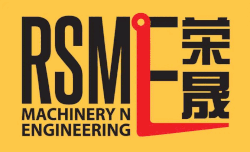When choosing a forklift for your business, it’s essential to understand the specifications that impact performance, versatility, and suitability for specific environments. In this post, we’ll explore the different types of forklift tires, attachments, and mast stages to help you make an informed decision.
Forklift Tires: Choosing the Right Type for Your Environment
Forklift tires play a significant role in the machine’s stability, handling, and suitability for various surfaces. Here’s a breakdown of the most common types:

Solid Cushion Tires
Description: Solid cushion tires are made from solid rubber and are directly pressed onto the wheel. They have a low profile and are best suited for smooth, indoor surfaces.
Purpose: Because of their compact design and smooth tread, cushion tires offer excellent maneuverability in tight spaces, making them ideal for warehouses and indoor facilities with polished concrete floors.
Limitations: Cushion tires are not recommended for rough or outdoor surfaces, as they lack traction on uneven ground.
Solid Pneumatic Tires
Description: Solid pneumatic tires resemble traditional pneumatic tires but are solid rubber rather than air-filled. They offer the durability of cushion tires combined with the ruggedness of pneumatic designs.
Purpose: Solid pneumatic tires provide excellent stability and resistance to punctures, making them suitable for both indoor and outdoor environments. They’re often used in applications that require rugged tires but have a higher risk of punctures, like scrap yards or recycling centers.
Limitations: Solid pneumatic tires are generally more expensive and provide a slightly rougher ride compared to air-filled tires.
Pneumatic Tires
Description: Pneumatic tires are air-filled and offer superior traction and cushioning. They’re similar to car tires, with deep treads for extra grip.
Purpose: These tires are ideal for outdoor use on rough terrain, such as construction sites, lumber yards, and shipping docks. The air-filled design provides cushioning that enhances ride comfort on uneven surfaces.
Limitations: Pneumatic tires are susceptible to punctures, making them less ideal for environments with sharp debris.
Commonly Used Forklift Attachments
Forklift attachments add versatility, allowing forklifts to handle different loads and perform specialized tasks. Here are some popular attachments:
Side Shift

Description: A side shift attachment allows the forks to move laterally, or side to side, without moving the entire forklift.
Purpose: This attachment is ideal for precise load positioning, especially in tight spaces. Side shifts are commonly used in warehouses and on loading docks, enabling operators to adjust the load position for easier placement or stacking.
Benefit: Side shifts improve efficiency and accuracy, reducing the need for repositioning the forklift itself.
Fork Positioners

Description: Fork positioners allow the distance between forks to be adjusted hydraulically, accommodating loads of varying widths.
Purpose: Fork positioners are valuable in settings where operators frequently handle loads of different sizes, such as warehouses and manufacturing facilities.
Benefit: This attachment saves time and enhances safety by allowing operators to adjust the forks without leaving the cab.
Hinged Forks

Description: Hinged forks, also known as “tilting forks,” can tilt forward or backward, allowing for load dumping or controlled tipping.
Purpose: Commonly used in waste management, recycling, and construction, hinged forks make it easy to dump loads into bins or containers.
Benefit: Hinged forks improve operational efficiency in industries where materials are frequently emptied or tilted for processing.
Understanding Forklift Mast Stages: 2-Stage vs. 3-Stage Masts
The mast is the vertical component that raises and lowers the forklift’s load. Forklift masts come in different stages, with each stage affecting the maximum lift height and the forklift’s stability.
2-Stage Mast (Duplex Mast)
Description: A 2-stage mast has two sections and a single set of rails that extend upward as the load is lifted.
Purpose: 2-stage masts are typically used for lower lift heights, making them ideal for loading and unloading trucks or moving loads to a limited height in warehouses.
Advantages: They provide excellent stability and visibility, which is helpful when frequent high lifting isn’t necessary.
3-Stage Mast (Triplex Mast)
Description: A 3-stage mast has three sections, allowing for higher lift heights and greater reach.
Purpose: This mast type is common in warehouses with tall shelving systems, as it can lift loads to high positions while still maintaining a compact design.
Advantages: 3-stage masts provide high reach and allow for stacking at greater heights without needing a larger forklift. For smaller forklifts, a 3-stage mast allows it to enter and work inside containers, paired with a sideshifter.
Conclusion
Choosing the right forklift specifications—whether it’s the tire type, attachment, or mast stage—depends on the specific needs of your operation. Solid cushion tires are perfect for indoor spaces, while pneumatic tires handle rough outdoor terrain. Attachments like side shifts and fork positioners improve productivity by adding versatility, and the mast choice determines how high you can lift your loads.
By understanding these options, you’ll be better equipped to select a forklift that fits your work environment and boosts productivity.

Comments